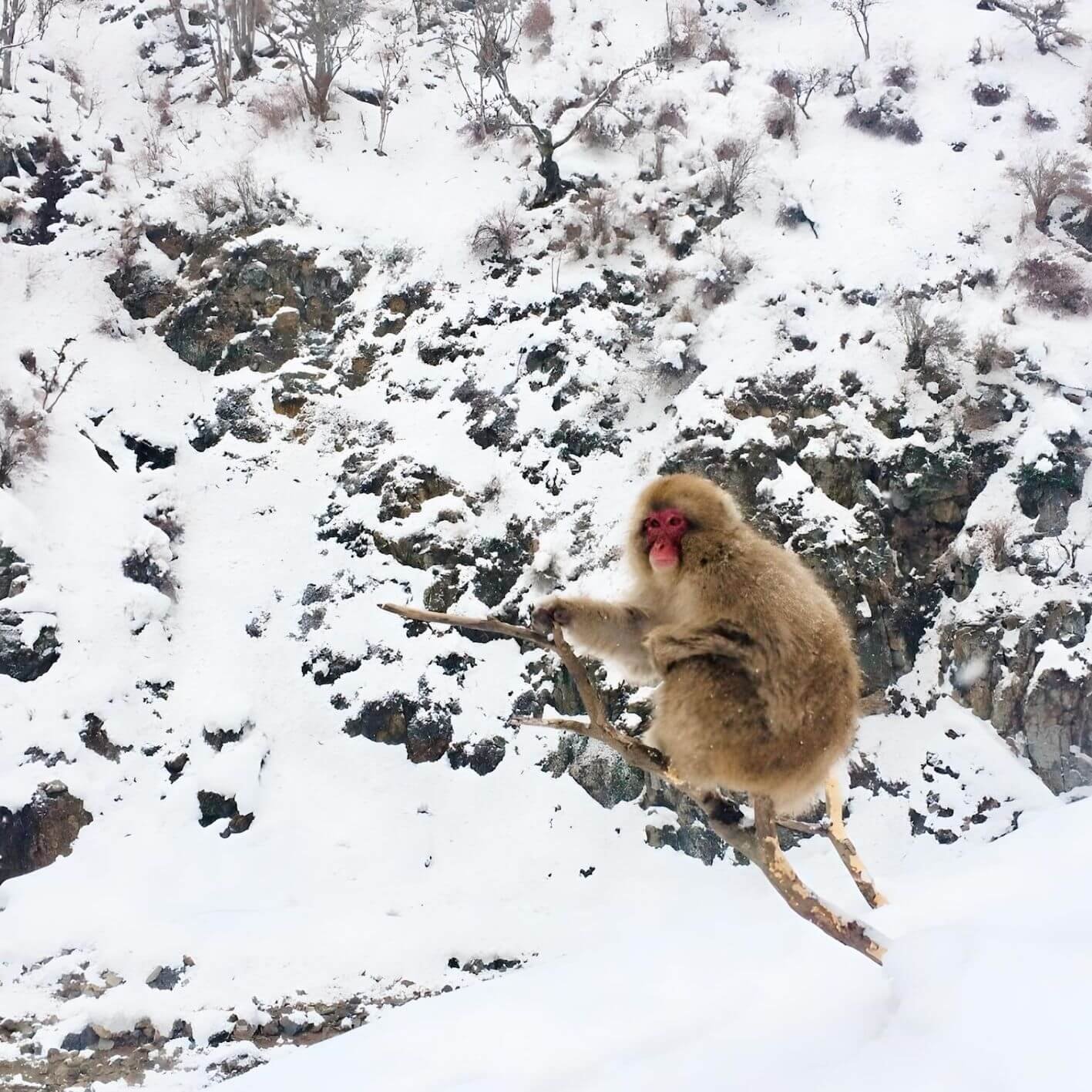Episode 16 of the podcast brings us back to Nagano Prefecture and one of the snow country’s most popular destinations, Jigokudani Yaen Koen – more commonly referred to as the Jigokudani Snow Monkey Park. Located in the enclave of Yamanouchi – 50 to 60 minutes from Nagano City – the park is home to a curious troop of Japanese macaques known for the love of bathing in hot springs. The story of the monkeys is an interesting one, something we delve into this episode which is intended to help you plan your visit to the monkey park with tips and suggestions of how to get the most out of your experience there.
Jigokudani Snow Monkey Park, Nagano: A Snow Country Stories Japan Travel Guide
Open all year round, the park attracts visitors from all over the world, most of whom come in winter to see the famous hot spring loving monkeys going about their lives in the snow of winter. The monkeys are however there all year round with spring, summer and autumn being equally good times to visit. The episode includes the history of the park including how the monkeys came to be there and discover a lover for hot springs, what to expect and my recommendations of the best times of year to visit.
The monkeys are wild meaning they come and go as they please; and while they are almost certain to be at the park on the day of your visit, the fact that they are wild means their presence is not guaranteed. For that reason I recommend combining your visit to the monkeys with other destinations in the area including the famous hot spring towns of Shibu Onsen and Yudanaka Onsen or exploration of Joshinetsu Kogen National Park including Shiga Kogen Highlands UNESCO Biosphere Reserve and of course, Shiga Kogen Mountain Resort – Japan’s largest ski resort. For anyone interested in the ski resort, make sure to check out Episode 13 of the podcast, 'Shiga Kogen: Japan’s Largest Ski Resort with Robel Zemichael / Shiga International Ski School’ for an in-depth discussion of what’s on offer.
The story of the monkeys is entwined with that of the ski resort and in essence, is one of environmental degradation and the impact of human action on wildlife. While the park doesn’t promote that element of its story, it is an important aspect that gives greater value to any visit. In that regard, we should also consider the role monkeys have long played in Japanese culture. The monkey is of course one of the twelve animals of the Chinese zodiac and following the introduction of Buddhism to Japan, the monkey was worshipped by different sects – a practice that peaked during the Edo Period – and with some scholars claiming the famous three monkey motif of ‘Speak No Evil, Hear No Evil, See No Evil’ originated in Japan.
And for many people, including myself, one of their earliest introductions to Japan was through the cult television show ‘Monkey’. Produced from 1978 to 1980, monkey was based on the classic Chinese novel ‘Journey to the West’. Written by Wu Ch’eng En in the 16th century, the book tells the story of a monk – Xuangzang or Tripitaka - who travels west to India to obtain Buddhist texts and is accompanied by the Monkey King - as depicted in the top image - along with Zhu Bajie or the Pig Monk and Sha Wujing, the Sand Monk.
The Monkey King as depicted by Japanese ukiyo-e artist Yashima Gakutei circa. 1824. Source: Wikimedia Commons.
And for many people, including myself, one of their earliest introductions to Japan was through the cult television show ‘Monkey’. Produced from 1978 to 1980, monkey was based on the classic Chinese novel ‘Journey to the West’. Written by Wu Ch’eng En in the 16th century, the book tells the story of a monk – Xuangzang or Tripitaka - who travels west to India to obtain Buddhist texts and is accompanied by the Monkey King - as depicted in the top image - along with Zhu Bajie or the Pig Monk and Sha Wujing, the Sand Monk. Growing up in the 1980s I loved the show, which in many ways was my first introduction to both Japan and China. Both the book and tv show are a whole lot of fun and while there’s no direct link between either of them and the monkey park, they provide greater context for the park and its curious residents.
Based in Nagano I have guided to the monkey park on my occasions and continue to guide there through the year. My Snow Monkey inc. Shibu Onsen Tour is a privately guided experience available in spring, summer and autumn and combines a visit to the historic hot spring town of Shibu Onsen with a visit to the monkey park – designed to provide greater context to your visit and more time to explore the charming town and surroundings of the park. Due to weather conditions in winter, I can’t operate the same itinerary and instead offer fully customisable tours of the monkey park – if of interest, please do not hesitate to get in touch. All tours include the cost of transport to and from Nagano City and entry to the monkey park.
However you choose to visit, I hope this travel guide is of interest and assists in getting the most out of your time at the monkey park. The park is open every day of the year with opening times varying by season: April to October / 08:30 to 17:00 and November to March / 09:00 to 16:00. Entry costs JPY800 per adult (aged 18 years and older), JPY400 for children and teenagers (aged 6 to 17) with admission free for infants (aged 0 to 5). I hope you enjoy!
Jigokudani Yaen Koen
https://en.jigokudani-yaenkoen.co.jp/
Joshinetsu Kogen National Park
https://www.japan.travel/national-parks/parks/joshinetsukogen/
Shiga Kogen Highlands Biosphere Reserve
https://www.shigakogen-unesco.org/en/uep/
Shiga Kogen Mountain Resort











